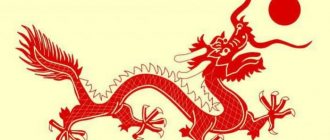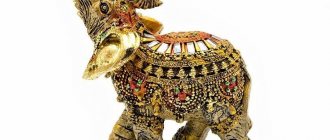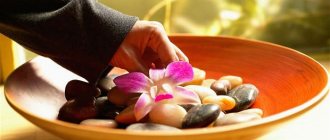What do red poppies symbolize? We can answer with almost complete certainty that many of us have never asked this question in our lives. But the huge fiery “sea”, on which the wind creates scarlet waves, is a sight so beautiful that you can look at it endlessly. Among all peoples and at all times, this flower has been a multifaceted symbol. There are many legends and myths about it; it was dedicated to the gods and used in medicine. The red poppy is a symbol of what? What did it mean in antiquity, in the East, and in our time? It's time to find out about it.
Antiquity
We can say that in Ancient Rome and Hellas this flower was revered most of all; it is from there that several legends about its origin come from. According to one legend, Venus cried for a long time after the death of Adonis; nothing could calm her down. And every tear of hers turned into a poppy. It’s sad, of course, but the red poppy is a symbol of what else? According to another legend, the poppy was created by the god of sleep Hypnos in order to calm Demeter, whose daughter was kidnapped by Hades. Hypnos gave her a decoction of this flower to drink, and she was comforted. Even today, her statues are decorated with these scarlet flowers. At the same time, the poppy was also a symbol of fertility due to the good germination of seeds.
Poppies as a feng shui talisman
As a rule, painted poppies are used as a talisman for the home. First of all, it's very beautiful. Take a look at modern modular paintings, or photo wallpapers with poppies. Secondly, it is the most durable compared to live poppies in a vase. At least because they do not like a lot of water and sunlight is vital for them. But this option is also possible.
You should also remember that according to Feng Shui, poppies should only be used in the house live or drawn, but not dried.
All kinds of herbariums are a taboo (!) in Feng Shui, as they carry the energy of death.
East
In Persian culture, the poppy is a symbol of happiness, eternal love, joy; the wild flower hinted at the desire for an intimate relationship. Buddhists were firmly convinced that the poppy appeared after the falling asleep Buddha touched the ground with his eyelashes. In China, the flower was associated with success, beauty, relaxation and distance from the hustle and bustle. However, it later became a symbol of available women and brothels. In the early 19th century, after the Opium War, smoking this drug became so popular that the flower became associated with evil and decay.
Medicinal properties
The healing properties of poppy have been known since ancient times. The juice and grains of the flower were used to temporarily give a person the opportunity to get rid of pain.
Nowadays, this flower is used to create medicines. The plant contains healthy proteins, vitamins, fats and microelements.
Medicines based on poppy have the following effects:
- relieve pain
- eliminate cramps, spasms,
- treat some cancers,
- reduce inflammatory processes,
- strengthen the body.
Unfortunately, the unique plant began to be used as a narcotic substance. In many countries, its cultivation has been banned.
As for the healing properties of poppy, they were known to people back in antiquity, and Theophrastus was one of the first to describe these properties. Hippocrates argued that poppy juice has a nourishing and strengthening effect.
Avicenna advised taking decoctions of poppy roots and seeds to treat headaches and ease digestion. He also noted that poppy is not only a good sleeping pill, but also has an analgesic and anthelmintic effect.
Traditional medicine quite widely uses poppy to create various drugs.
Thus, many painkillers, anticonvulsants, antitussives, antispasmodics and sleeping pills contain elements of this plant.
Mac is also excellent in treating diseases of the respiratory system (bronchitis, asthma), ulcers (stomach and duodenum), migraines, hypertension, angina pectoris and colitis.
In traditional medicine, absolutely all parts of the poppy are used. A decoction of the roots relieves headaches well, and a decoction of the seeds is recommended to drink to improve digestion. Compresses from crushed leaves are applied to bruises, tumors and joints. In addition, ground leaves are good helpers for getting rid of warts.
Poppy tincture helps overcome insomnia, calm the nervous system and relieve coughing spasms. This plant also fights stress and fatigue well, and decoctions from the seeds will relieve any pain (including toothache).
Red poppy - a symbol of what in the Middle Ages?
In its bloodthirsty and gloomy traditions, Christianity declared the poppy to be a sign that the Last Judgment would soon come. The flower, according to the beliefs of that time, recalled the terrible suffering of Christ, and was also a symbol of indifference and ignorance. On the day when the Descent of the Holy Spirit took place, churches were decorated with poppies, and children carried flowers and scattered petals during the procession. Next came the priest with the holy gifts. In the 16th century, a treatise by the physician Theodorus Jacobus appeared warning that the seeds of the flower and its other parts should not be consumed excessively.
Legends of the poppy
The poppy is a symbol of fertility, oblivion, idleness. The mythopoeic image is a sign of sleep and death, and the blooming one is of unprecedented beauty, also a symbol of unfading youth and feminine charm. The symbol of the Great Mother, meaning the Virgin Mother, night. Dedicated to all lunar and night deities. Symbolizes fertility, fertility, oblivion, idleness. China: retirement, relaxation, beauty, success; however, as a source of opium - decay and evil. Christianity: sleep, ignorance, indifference. The blood-red poppy represents the suffering of Christ and the dream of death. Greco-Roman tradition: period of sleep and death of the plant world, emblem of Demeter (Ceres), Persephone, Venus, Hypnos and Morpheus. In folk poetry, the poppy is known as a sign of short-term happiness: “My age passes like a poppy flower”... There are several legends and myths associated with the appearance of the poppy. When the Lord created the earth, animals and plants, everyone was happy except Night. No matter how hard she tried to dispel her deep darkness with the help of stars and glowing bugs, she hid too many of the beauties of nature, thereby pushing everyone away from her. Then the Lord created Sleep, dreams and daydreams, and together with the Night they became welcome guests. Over time, passions awoke in people, one of the people even planned to kill his brother. The dream wanted to stop him, but the man's sins prevented him from approaching. Then Sleep, in anger, stuck his magic rod into the ground, and Night breathed life into it. The rod took root, turned green and, retaining its sleep-inducing power, turned into a poppy. The poppy served as a symbol of fertility due to its great fertility. Therefore, it is a permanent attribute of Hera (Juno) - the goddess of fertility and marriage. The temple and statue of the goddess of fertility and marriage - Hera (Juno) on the island of Samos were decorated with poppy heads. The goddess of the harvest, Ceres (Demitra), was always depicted with a poppy in her hand. Wreaths were woven from poppy flowers and ears of grain to decorate her statues. Often the goddess herself was called Mecona (from the Greek mecon, makon - poppy). The ancient Greeks believed that this flower was created by the god of sleep Hypnos for Demeter when she was so tired in search of her missing daughter Persephone, who was stolen by Hades, the lord of the underworld of the dead, that she could no longer ensure the growth of bread. Then Hypnos gave her poppy seeds so that she could fall asleep and rest. Persephone was sometimes depicted with a poppy - she was imagined entwined with garlands of poppy flowers - as a symbol of the peace descending to the earth at this time. According to ancient Roman legend, he grew from the tears of Venus, which she shed upon learning of the death of the beautiful young man Adonis. According to Buddhist legend, poppies grew on the ground that was touched by the eyelashes of the sleeping Buddha. The poppy is called “blind strike” because the bright red color of the poppy is blinding, and “weak head” because. the smell of its flowers gives me a headache. This flower is an attribute of Hypnos. He was depicted as a lying or sitting youth or angel with lowered wings, carrying poppy heads in his hands, sometimes with a wreath of poppy heads on his head. “Beautiful, young god of sleep Hypnos. He silently flies on his wings above the ground with poppy heads in his hands and pours a sleeping pill from the horn. He gently touches people's eyes with his wonderful rod, quietly closes his eyelids and plunges mortals into a sweet sleep. The god Hypnos is mighty; neither mortals, nor gods, nor even the thunderer Zeus himself can resist him: and Hypnos closes his menacing eyes to him and plunges him into deep sleep...” He was an attribute of the god of death - Thanatos, so he was depicted as a young man with a wreath made of poppy, but with black wings, wearing a black robe and extinguishing an overturned burning torch. Morpheus' dream kingdom was planted with poppies. Poppy is also considered the flower of angels, as it is used to decorate churches on the day of the Descent of the Holy Spirit. On this day, small children dressed as angels walk in procession in front of the priest carrying the Holy Gifts, and strew poppy flowers on the road in front of him. The soporific and analgesic properties of poppy were well known in ancient times. Theophrastus, who is called the “father of botany,” gave a very clear description of it, as well as its healing properties. In ancient medical manuscripts, poppy juice is mentioned as a drink that puts a person to sleep during surgical operations. Homer wrote that Helen the Beautiful eased the suffering of soldiers wounded during the Trojan War with poppy juice. Virgil called the poppy "lathean" - "giving oblivion." Hippocrates said that poppy juice can serve as a nutritious and strengthening agent. Dioscorides warned that poppy juice can kill if you drink too much of it. In the 16th century, the first cautionary book by the botanist and physician Tabernet-Montanus (Jacob Theodorus) appeared, “The Juice of Poppy Seeds,” which spoke of the dangers of its excessive consumption. Red poppies as a symbol. In 1915, during the First World War, Canadian military doctor John McCrae wrote a well-known poem, “In Flanders Fields,” which began with the following lines: “Everywhere poppies burn with candles of sadness In the war scorched Flanders fields, Between the gloomy crosses that stand in rows, In those places where our ashes were recently buried” - translation by A. Yaro. In 1915, inspired by these poems, the American professor Moina Michael responded with her own poem: “We remember the red poppies, In the fields that grow - signs of valor, As if shouting to the heavens about the blood of Heroes who will forever live.” Then she came up with the idea of wearing red poppies on Remembrance Day in honor of those who died during the war. She was the first to wear them, she sold the poppies to employees and friends, and the money went to charity. Later, Madame Guerin from France, having visited the United States, began making artificial poppies and selling them for the benefit of orphans and widowed women. In 1921, the Franco-American Children's League sold poppies to help war orphans in France and Belgium. This tradition has spread to other countries, particularly Great Britain. There is a belief in many areas that poppies always grow in abundance on battlefields. The main basis for this popular belief was, of course, the red-bloody color of its flowers. But in fact, the abundance of poppies here is easily explained by the fact that cattle are usually not allowed to graze in these fields, as a result of which the poppy has more time to ripen and, scattering numerous seeds every year, over time almost completely covers these fields with its bright red flowers. The people, however, are sure that these are not flowers, this is the blood of the murdered, which rises from the ground and, turning into bloody poppy flowers, asks the living to pray for the repose of the sinful souls of the dead. Children are intimidated not to go to poppy fields, as poppy flowers suck blood. And they call them “sprokelloem” - “ghost flowers”. Poppy came to the East - to Iran, India, China in the 9th century, and if until that time it was known only as a food plant, then from the 10th century it began to be grown in China for the purpose of producing opium. The addiction to this plant began with smoking. In the 13th century, the bad habit was adopted in India. In the 18th century in China, the poppy craze reached colossal proportions and the government was forced to resort to banning the cultivation and import of opium. In many countries, the soporific or opium poppy (Papaver somniferum L.) has been cultivated for thousands of years. From its unripe capsules opium is obtained - a thickened milky juice used for the production of medicines (papaverine, etc.) and drugs. Technical oil is produced from the seeds of this plant. Poppy seeds are also used in confectionery. In Russia, it is prohibited to cultivate “Opium poppy (plant of the species Papaver somniferum L.) and other types of poppy of the genus Papaver containing narcotic substances.”
Scarlet flower today
And today the red poppy is a symbol of what? For example, to this day this flower is the emblem of the British Legion. Every year in the fall, artificial flowers are sold as a reminder of those who died in armed conflicts and two world wars. In Ukraine, for example, poppy is associated with fertility and endless open spaces. Petals were sprinkled on wedding loaves so that the newlyweds would have health and many children. Also in this country, the red poppy is a symbol of Victory; they have recently decided to use it at all official events.
Magic properties
In ancient times they believed that spirits lived in poppies. The flower was used for magical rituals, witchcraft, and fortune telling. Poppies were amulets against the evil eye and evil spirits. The grains of the flower were scattered during wedding ceremonies, in places where the woman in labor was with her child. Grains were scattered in the house so that the devilish forces would not get close to the owners.
A woman who could not get pregnant for several years put flower petals in the attic. They lay there for as many days as the couple had been unable to have children for years. Then the petals were burned.
With the help of flower seeds, spells were made for wealth and profit.
The poppy is widely known for its magical properties, as it symbolizes youth, fertility and feminine charm. Due to the fact that since ancient times this flower has also been a symbol of oblivion and sleep, it was given special significance in the interpretation of dreams.
In magical rituals, the poppy, which has white flowers, was mainly used. Its main use was love magic and love spells.
For this purpose, flower seeds were collected in the late evening (almost at night) and only during the waxing Moon. This had to be done with the left hand so that the seeds would end up in the right.
It was believed that if you carry such seeds in your pocket, then soon love will definitely knock on the door.
Poppy is also a very good amulet that wards off evil spirits, which is why the seeds (which were on the table on Christmas Eve) were sprinkled at home. In addition, this flower protected against witches and the evil eye. In the Czech Republic and Slovenia, they sprinkled poppy seeds in the corner where a newborn slept with his mother, and in the Slavs they poured seeds into the bride’s stocking.
According to legend, poppy seeds can protect people and animals from snakes; to do this, they sprinkled the house with poppy seeds or placed them on the windowsill. In addition, with the help of this plant they often tried to predict the future.
There are many ways to use the poppy as an amulet. For example, in order to see things in dreams, you need to put a piece of paper with a question in a dried poppy seed box and place it near the head of the head. And to attract wealth, such a box of seeds should be carried with you.
Tattoo with a scarlet flower
Everyone knows that flowers depicted on the body are of great importance. What does the red poppy mean in this case? A tattoo with this flower has always been associated with death or sleep. And these two concepts are too close to each other, for example, lethargic sleep often duplicates the state of death, it is so difficult to distinguish them. This is all very strange, and people have been thinking about solving the mystery for decades.
Another meaning of such a pattern on the body is truth, devotion, fidelity. When deciding to decorate your body with poppy seeds, think about whether it’s worth it. No matter what meaning you put into the drawing yourself, there will always be some secrets and meanings unknown to us.
What does a painting with poppies bring to your home?
It is believed that it is useful to fill the house with fresh flowers. But paintings with plant motifs are no less powerful. An image of a painting with poppies can be located in those areas of the house to which additional energy needs to be attracted. The flower with its bright halo attracts Qi and enhances its influence. But the effect of a magical talisman can be different. Depending on how it is depicted on an artistic canvas, the nature of its impact may vary.
We have selected interesting articles for you:
How should a bed be positioned according to Feng Shui rules?
26.01.2019
Ficus benjamina - meaning for the home
27.01.2019
The riot of colors in the picture will attract the energy of passion and overcoming, and the calm lyrical plot with a finely painted flower will encourage contemplation and peace. If the canvas is painted using a large number of red shades, it will enhance the energy of fire in the house. If the flower is located alone and is surrounded by a large amount of green foliage, such a picture will attract fresh energy of new beginnings into the house.
Regardless of the nature of the image of the energy talisman, it will bring love, harmony into the house and will have a beneficial effect on the ability of the female half of the house to bear children. Poppies in the interior will definitely have an impact on those in the house, and this influence, despite the entire palette of variations, will most likely be positive.
Choosing a site for planting and care
Poppies love sun, so plant them in an open, sunny area. Sow the seeds in loose, sandy soil. After five years, it is recommended to transplant the flowers to another place. Since the roots grow greatly, they are divided for replanting.
The plant does not require special care. Water it so that the moisture does not stagnate. Overwatering causes the roots to rot. Diseases and harmful insects rarely damage the plant. If the flower has grown tall, secure it near a support so that it does not break.
Poppies fade very quickly, after which cut off the dried above-ground part of the flower.
What else is this wizard capable of?
The truly magical poppy flower is responsible not only for solving interpersonal problems, but also for attracting good luck according to Feng. Your career or business will turn your head with its lightning-fast successes, you just have to resort to the help of these fiery flowers. For those who run their own business, poppy is truly a godsend. It will help minimize risks, costs and save your finances for an important investment. Thus, the poppy will pave a direct path for its owner to prosperity and regular profit.
Another surprise for those who are seriously interested in poppies will be an interesting fact about them. Thanks to its expressive coloring, the poppy, like its image, has irrepressible leadership energy, which it shares with its owner. A person who keeps a poppy at home becomes strong, energetic and self-confident.
In addition, it will also give you communication skills. Feng Shui recommends it to those people whose self-esteem for one reason or another is low, and the person himself only goes with the flow, obeying the will of fate. Mac is capable of making its owner confident and courageous in a fairly short period of time, getting what he wants from life.
Case of James McClain
It wasn't just FIFA that didn't like the tradition of wearing poppies on T-shirts every year. Irish midfielder James McClain has ideological rather than bureaucratic reasons for this. Since 2011, the winger, who then played for Sunderland (now at West Brom), has refused to wear the red flower and these days receives streams of whistles and hatred even from his club's fans.
McClain is from Derry, Northern Ireland, where Bloody Sunday happened in 1972: British troops shot at a demonstration of local residents who had come to march in defense of civil rights in Northern Ireland. 13 protesters were killed, and the conflict between the Irish Republican Army and the British armed forces flared up with renewed vigor.
In 2010, David Cameron apologized to the victims and their families on behalf of the state, but McClain did not accept the apology.
“I am full of respect for those who fought and died in both world wars,” the footballer explained his position. “I mourn their death and, like any other decent person, if the poppy were a symbol of only this, I would wear it every day.” However, the poppy also symbolizes the memory of British soldiers who served in conflicts after 1945 . And this is where the problem begins for me. To people in the north of Ireland who understand what happened on Bloody Sunday 1972, the poppy means something very different . For me, wearing a poppy would be a gesture of disrespect for the innocent people who lost their lives during those troubled times. I want everyone to understand this 100%. I am a man, and my upbringing does not allow me to deviate from my convictions.”
McClain has repeatedly demonstrated his political leanings: in 2015, the Irishman turned his back to the English flag and lowered his head during the British anthem, and after the referendum on Britain’s exit from the European Union, he called on Ireland and Northern Ireland to unite with a tweet “Let’s light the fires of reunion.”
Photo: Gettyimages.ru/Clive Rose, Laurence Griffiths, Mike Hewitt, Richard Heathcote, Steve Bardens, Dan Mullan, Richard Heathcote, Shaun Botterill, Michael Regan, Jordan Mansfield, Matthew Lewis, Clive Brunskill, Charles McQuillan
Mystical poppy
By the way, about the supernatural. Rare love divination is complete without self-seeding poppy . The easiest way is to collect the seeds of such a poppy in your right palm on the waxing moon at night and carry them in your pocket, thinking about your chosen one. You can not carry the grain, but scatter it across the field against the wind with the sentence:
This harmless homemade way to bewitch the groom only lasts for six months, and then the spell wears off! Therefore, girls, hurry up to tie your betrothed to you tightly during this time! Otherwise, you will be left with your nose. However, if you suddenly don’t like the candidate for your hand, then you won’t need to make a lapel.
Poppy flower: meaning, description
Many gardeners and summer residents associate these flowers with drugs. In reality, everything is not quite like that.
It is forbidden to grow the poppy flower, or opium poppy. Its height is about a meter, the flowers are large (10-12 cm in diameter), white, pink, orange, red, purple, with a black-bluish spot at the base.
The seeds of this poppy are edible. Morphine and opium are obtained from the seed pods. In addition, there are many different types of ornamental poppies that do not have narcotic properties. All of them are divided into three groups: perennial, annual and biennial.
Poppy (flower): description
This plant is from the Poppy family. The entire genus has more than 100 species. From Latin the name is translated into Russian as “milk”. Why? The fact is that when the flower stem is cut, a white juice similar to milk is released.
The bush of the plant usually has a height of almost 90 cm, sometimes small, dwarf forms are also found. It has a hard, hairy stem. The leaves are pinnate, dissected.
Large flowers are single, among which there are both simple and double species. June is the month of poppy flowering, after which the flower stalks and then the leaves and stems die off.
In nature, perennial poppies are common in Asia, Europe and Australia.
Choosing a site for planting and care
The poppy flower loves a well-lit place, but slightly shaded areas are also not contraindicated for it. The soil is suitable: ordinary garden soil, but well drained. Rich in minerals and nutritious, flowers will like it even more. Poppies are unpretentious, frost-resistant, and can easily withstand periods of drought.
After the end of flowering time, when the leaves are already beginning to turn yellow, the above-ground part must be cut off. In this case, around mid-August, the leaves begin to re-grow. In a warm autumn, the plant may bloom again. And the leaves may turn green under the snow. In April they begin to bloom again.
Perennial poppies can be planted either individually or in mixed groups (in rockeries). Both flowers and capsules are widely used as cut flowers. For example, boxes are a good material for original dry winter bouquets.
Reproduction
The poppy flower is usually propagated by seeds. Sowing can be done both in spring and before winter, and in open ground. It is advisable to plant immediately in a permanent place of growth. If necessary, seedlings can be thinned out.
The roots of adult plants are quite long, so it is difficult to replant them, as damage to the root system is possible.
Oriental poppy can also be propagated by division, as it has root shoots. However, this procedure must be carried out in the summer immediately after flowering, during dormancy.
The most common garden flowers are poppies. Kinds
In floriculture, the most widely used and widespread are oriental poppy and bract. They are the brightest and most beautiful.
The homeland of the oriental poppy (P. orientale) is the Caucasus. This perennial has thick, erect stems. Their height is up to 100 cm.
The pinnately dissected basal leaves, collected in a rosette, are dark green (length - up to 30 cm). Its stems, leaves, and buds are pubescent and shaggy.
Large bright red flowers are up to 14 cm in diameter. At the very base of the petals there is a black square spot.
The type of bract poppy (P. bracteatum) is also native to the Caucasus. Its height reaches 140 cm. The stem is erect, the flowers are bright, crimson-red (diameter 16 cm).
And at the very base of the petals there is an elongated black spot. It blooms quite profusely, starting in late May and ending in early June.
Different varieties of this species differ in bush height, color and size of flowers. Both species are perennial flowers (poppies).
Perennial flowers: care
Perennials are of three types: alpine, oriental and holostem. The most widespread among gardeners, as noted above, are varieties of oriental species.
Perennial poppies do not require shelter for the winter; they are light-loving, winter-hardy, and tolerate drought well. There is a minor whim - stagnation of water is undesirable.
The poppy flower is very responsive to organic and mineral fertilizers.
This species can be propagated vegetatively by carefully separating the side rosettes in spring or autumn. Without transplantation, poppies grow for about 7 years.
Flowers look great in a group with other plants (among daisies, bells, etc.). Dwarf varieties are great for today's fashionable alpine slides.
Annuals
If there are annual poppies on the site, how is care done? These include the self-sowing plant. These poppies come in simple and double varieties. Their colors vary from white to red, and there are also white ones with a border around the edges of the petals. Garden poppy is also good and interesting. Its flowers (double varieties) resemble peonies.
Annual poppies can be sown in early spring, after the snow has melted. They produce abundant self-seeding, so it is enough to sow them just once.
Bouquets with poppies are a wonderful decoration for any room, but there is one drawback - they don’t last long after being cut.
There is a little secret that prolongs the life of flowers. They need to be cut off in the morning, and only the burst buds. Then the cut site must be held over the fire for several seconds, and then immediately placed in water. You need to add a few crystals of potassium permanganate to it. The bouquet will last longer.
Source: pr-perevod.ru










